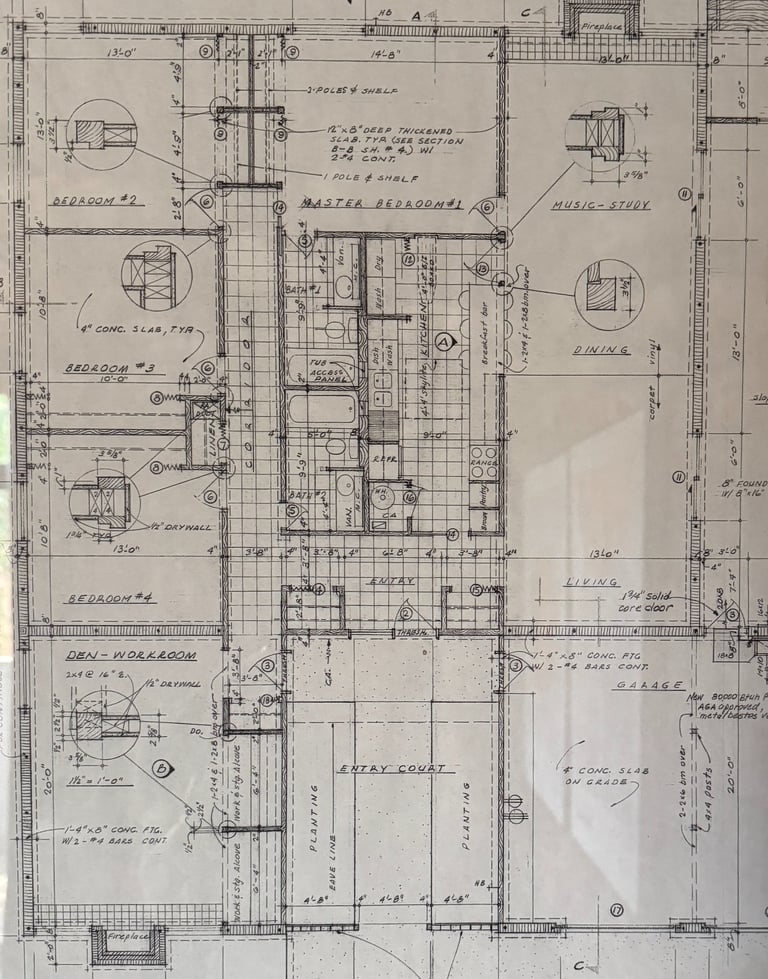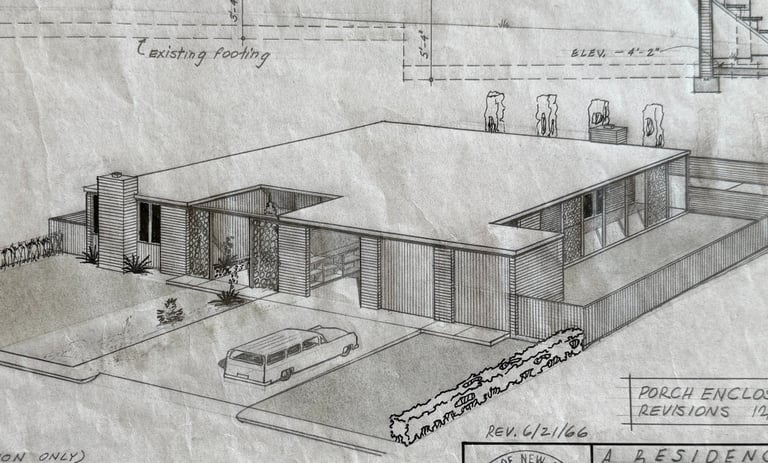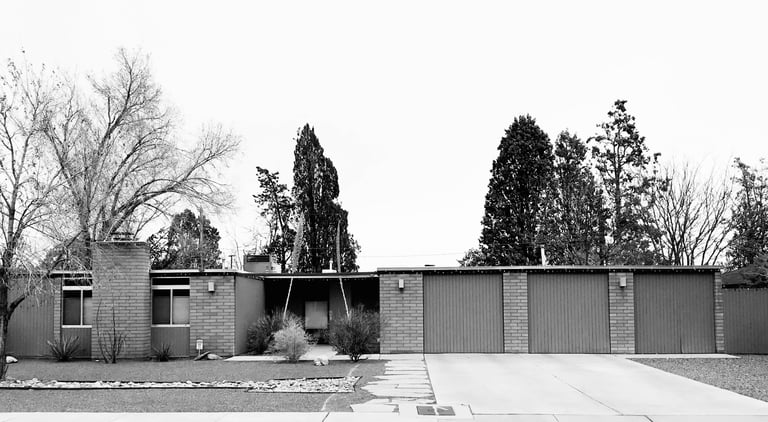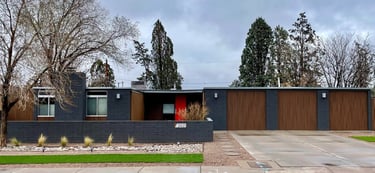The Dekker House
Historical Context
When Dekker built his house in 1965, Albuquerque was booming, fueled by defense contracts and population growth. The region’s economic surge meant new neighborhoods sprung up rapidly, especially near military bases. Dekker’s firm thrived in this atmosphere, creating high-end homes for the city’s growing professional class while smaller developers handled the sprawling suburbs.
Mr. Dekker lived in this house for about a decade with his wife and four children before moving to another home in Netherwood Park.
Modernist Design: Simple, Open, Unadorned
The Dekker House is a true expression of mid-century modernism:
Clean, rectangular shapes: The house avoids extra ornament, favoring bold forms and simplicity.
Masonry walls: Dekker chose masonry for both durability and aesthetic reasons, a rare material in homes of the era.
Open floor plan: The house is organized into a public wing (music, dining, living rooms) and a private wing (children’s bedrooms, den), with the kitchen and master bedroom connecting both areas—perfect for entertaining and family life.
Modern conveniences: Built-in appliances like a dishwasher, washer, dryer, and foldout ironing board—in 1965, these were the height of convenience!
Dekker’s thoughtful touches are everywhere
Two fireplaces add warmth and a sense of luxury.
Garage and utility shed: Space for two cars (plus a shed styled as a fake garage!) signaled affluence.
Refined materials: Redwood trim and marble details show subtle wealth and style, setting the home apart from its neighbors.
Dekker’s home shares its quiet beauty with iconic modernist houses, like those crafted by Ludwig Mies van der Rohe. The low, simple roofline contributes to a box-like silhouette—striking in its understated elegance and clearly modern among the more traditional Southwestern architecture of Albuquerque.








